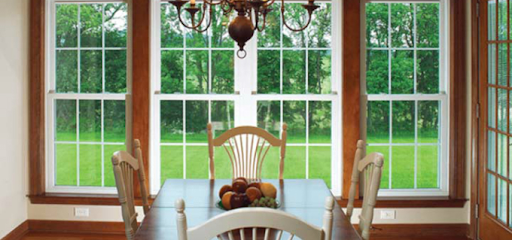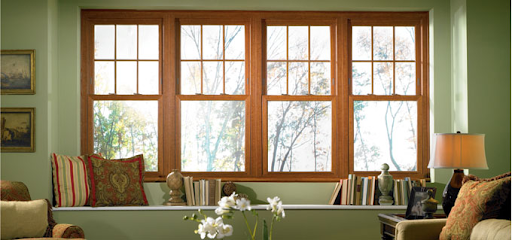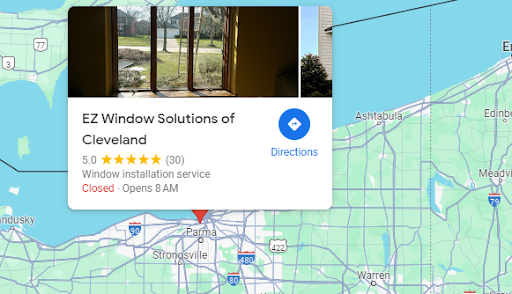In the realm of home improvement, few upgrades can offer the blend of practicality, aesthetics, and value enhancement quite like replacement windows. Whether you’re looking to enhance your home’s curb appeal, improve energy efficiency, or simply update its style, investing in new windows can significantly transform both the interior and exterior of your property. In this comprehensive guide, we’ll delve into everything you need to know about replacement windows, from their benefits and types to the installation process and cost considerations.
Benefits of Replacement Windows:
Increased Security:
Older windows may have worn-out locks or mechanisms, making them susceptible to break-ins. Replacement windows often come with advanced locking systems and durable materials, enhancing your home’s security and providing peace of mind for you and your family.
Ease of Maintenance:
Traditional wooden windows require regular scraping, painting, and sealing to maintain their appearance and functionality. Replacement windows made from materials like vinyl or fiberglass are low-maintenance, requiring only occasional cleaning with soap and water to keep them looking pristine.
Better Ventilation Control:
With features like tilt-in sashes or multiple operating options, replacement windows offer improved control over ventilation in your home. You can easily adjust the airflow to suit your comfort preferences and maintain optimal indoor air quality.
Environmental Sustainability:
Investing in energy-efficient replacement windows not only reduces your carbon footprint by conserving energy but also helps to minimize the demand for new resources used in heating and cooling your home. By choosing sustainable window materials and technologies, you contribute to a healthier environment for future generations.
Customization Options:
Replacement windows come in a wide range of styles, colors, and finishes to complement your home’s architectural design and interior décor. Whether you prefer sleek and modern aesthetics or timeless classic designs, there are customization options available to suit your taste and preferences.
Potential Tax Savings:
In some regions, upgrading to energy-efficient replacement windows may qualify you for tax credits or rebates offered by government agencies or utility companies. These incentives can help offset the initial cost of the windows and provide long-term savings on your energy bills.
Increased Home Value:
Beyond the immediate benefits of energy savings and improved aesthetics, replacement windows can significantly enhance the overall value of your home. Potential buyers often view updated windows as a desirable feature, making your property more attractive and competitive in the real estate market.
By considering these additional benefits, you can gain a more comprehensive understanding of the value that replacement windows can bring to your home, making them a wise investment for both your immediate comfort and long-term satisfaction.

Types of Replacement Windows:
Bay Windows:
Bay windows consist of three or more panels arranged at angles to protrude outward from the wall, creating a small alcove or bay within the room. These windows add architectural interest to a home’s exterior and provide expansive views and additional seating or storage space indoors.
Bow Windows:
Similar to bay windows, bow windows feature multiple panels arranged in a curved or semi-circular shape, creating a gentle arc that extends outward from the wall. They offer a panoramic view and can make a room feel more spacious and inviting.
Garden Windows:
Garden windows are mini greenhouse-like structures that extend outward from the wall, typically with glass panels on all sides and a sloped glass roof. They’re designed to capture sunlight and provide a space for indoor plants or herbs to thrive, adding a touch of nature to your home’s interior.
Transom Windows:
Transom windows are narrow, horizontal windows installed above doors or larger windows to allow additional light into a room while maintaining privacy. They can be fixed or operable and come in various shapes and styles to complement different architectural designs.
Skylight Windows:
Skylight windows are installed in the ceiling or roof of a home to bring natural light into interior spaces. They can be fixed or operable and come in various shapes and sizes, offering an alternative way to brighten up rooms and create a sense of openness and connection with the outdoors.
Hopper Windows:
Hopper windows are hinged at the bottom and open inward from the top, similar to how a hopper door operates. They’re often used in basements or utility rooms to provide ventilation while maintaining security and privacy.
Geometric Windows:
Geometric windows come in a variety of shapes, such as circles, triangles, or hexagons, and are used to add visual interest and architectural flair to a home’s design. While they may not be operable, they can still allow natural light to enter and serve as decorative accents both inside and outside the home.
Each type of replacement window offers unique features and benefits, allowing you to customize your home’s appearance and functionality to suit your preferences and lifestyle. Whether you prioritize ventilation, aesthetics, or energy efficiency, there’s a replacement window style available to meet your needs and enhance your living space.

Installation Process:
Inspection and Adjustment:
Once the replacement windows are installed, the installer conducts a thorough inspection to ensure they are properly aligned, operate smoothly, and meet quality standards. Any necessary adjustments are made to ensure a perfect fit and optimal functionality.
Weatherproofing:
To enhance the durability and weather resistance of the new windows, additional weatherproofing measures may be applied. This could include the installation of weatherstripping around the frame to create a tight seal against drafts and moisture infiltration.
Sealing and Caulking:
High-quality sealants and caulks are applied around the perimeter of the window frame to seal any gaps and prevent air and water leakage. This step is crucial for maintaining energy efficiency and preventing potential water damage to the surrounding structure.
Testing and Operation:
Before completing the installation process, the installer tests each window to ensure it opens, closes, and locks properly. This thorough testing ensures that the windows meet safety standards and function as intended for years to come.
Cleanup:
Once the installation is complete, the installer removes any debris and cleans the work area to leave your home looking neat and tidy. This final cleanup ensures that you can enjoy your newly installed replacement windows without any mess or inconvenience.
Customer Walkthrough:
The installer conducts a final walkthrough with you to demonstrate how to operate and maintain your new windows properly. They provide any necessary instructions or tips to ensure you get the most out of your investment and address any questions or concerns you may have.
Follow-Up Service:
Some reputable window installation companies offer follow-up service or warranties to guarantee customer satisfaction. This may include periodic inspections, maintenance checks, or assistance with any issues that may arise after the installation process is complete.
By following these additional steps in the installation process, you can ensure that your replacement windows are installed correctly, perform optimally, and provide lasting value and satisfaction for your home.
Cost Considerations:
The cost of replacement windows can vary widely depending on factors such as the size of your home, the type and quality of windows selected, and any additional features or customization options. It’s essential to obtain quotes from multiple reputable contractors to ensure you’re getting a fair price for your project. While the initial investment may seem significant, the long-term energy savings and added value to your home can make replacement windows a worthwhile investment.
Material Selection:
The material of the replacement windows significantly impacts the overall cost. Common materials include vinyl, wood, aluminum, fiberglass, and composite. While vinyl tends to be more budget-friendly, wood and fiberglass are typically higher in cost but offer additional benefits such as durability and aesthetics.
Window Style and Design:
Different window styles and designs come with varying price tags. Basic styles like single-hung or double-hung windows are usually more affordable compared to specialty styles such as bay or bow windows, which require more intricate craftsmanship and materials.
Glass Options:
The type of glass used in replacement windows can affect the cost. Options like double or triple-pane glass with gas fills offer better insulation but come at a higher price point compared to single-pane glass. Additionally, features like low-emissivity coatings or tinting for UV protection may add to the overall cost.
Installation Complexity:
Factors such as the condition of the existing window frames, accessibility of the installation area, and any necessary structural modifications can impact installation costs. More complex installations may require additional labor and materials, leading to higher overall expenses.
Labor Costs:
Labor costs for window replacement vary depending on the contractor’s expertise, location, and project complexity. It’s essential to obtain detailed quotes from reputable contractors that include labor costs to ensure transparency and avoid unexpected expenses.
Warranty and Service:
Consider the warranty offered by the window manufacturer and the installation company. Opting for products with longer warranties and comprehensive coverage may involve a higher upfront cost but can provide added peace of mind and potential cost savings in the long run.
Energy Efficiency Incentives:
Investigate whether there are any local or federal incentives available for upgrading to energy-efficient replacement windows. These incentives, such as tax credits or rebates, can help offset the initial investment and reduce the overall cost of the project.
Long-Term Savings:
While replacement windows may require a significant upfront investment, it’s essential to consider the long-term savings they offer. Energy-efficient windows can lead to lower utility bills over time, contributing to cost savings and potentially offsetting the initial expense of installation.
By carefully considering these cost factors and weighing the benefits against the investment, you can make informed decisions about your replacement window project and ensure that you achieve the best value for your budget.
Conclusion:
Replacement windows offer a multitude of benefits, ranging from improved energy efficiency and comfort to enhanced curb appeal and noise reduction. By understanding the different types of replacement windows available, the installation process, and cost considerations, you can make informed decisions to transform your home and enjoy the numerous advantages that come with upgrading your windows. Whether you’re looking to modernize your home or increase its resale value, replacement windows are a smart investment that can enhance both the beauty and functionality of your living space.

Media Contact
Company Name: EZ Window Solutions
Contact Person: Media Relations
Email: Send Email
Country: United States
Website: www.ezwindowsolutions.com/